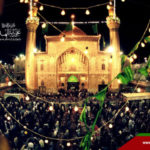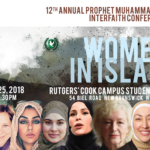On Thursday night, Feb. 16, a suicide attack at a shrine in Sehwan, Pakistan, killed at least 85 people.
Muslims4peace strongly condemns the barbaric killings by The Islamic State of Iraq and the Levant (ISIL) who have admitted involvement, suicide attack was made on a shrine at Sehwan, Pakistan, killing at least 85 people, detonating explosives in the crowded area filled with many women and children and the deadliest in Pakistan since 2014. More than 250 people were injured in the blast.
We are shocked and saddened on the terrorist attack that targeted innocent people, including women and children. Terrorists have once again shown that they have no respect for humanitarian and Islamic values.
The shrine, located in the southwest region of the country is a place of worship for followers of Sufi Islam.
Built in 1356, the shrine is also located near the tomb of the philosopher poet Syed Muhammad Usman Marwandi, better known as Lal Shahbaz Qalandar.
Sufiism is a form of Islam, rather than a sect, and Sufi orders can be found in both Sunni and Shia groups.
Known to the world as Hazrat Lal Shahbaz Qalandar, Syed Mohammad Usman Marwandi was born in the late twelfth century in 1177 in Marwand, now Afghanistan, to Syed Ibrahim Kabir-ud-Din Mujab.
His mother was a high-ranking princess and his father was the caretaker of the Holy Shrine of Imam-e-Hussain (AS), where he is buried.
Lal Shahbaz Qalandar learned the Quran by heart by the age of seven, and when he turned 20 he was initiated into the Qalandar order. According to historians, he was initially taught by his mother. Later on, he traveled to Medina (Kingdom of Saudi Arabia) and spent some time there for further education. From there he went on to Karbala (Iraq) where he looked after the shrine of Imam-e-Hussain.
In many books, historians talk about Qalandar’s journey to the subcontinent i.e. Hindustan due to a dream in which Imam-e-Hussain (AS) ordered him to do so.
He went to Mashad, stayed there for a short time and then continued his journey to the subcontinent. It is said he entered Karachi through Makran. Then went on and stayed at the mausoleum of Syed Sadr-ud-din, Sukkur (Sindh) and from there to Surkh Syed Jalal-ud-din Bukhari of Uch Sharif, Bahawalpur.
After Uch, Qalandar left for Multan where he preached Islam. His preachings impressed the ruler of Multan, who converted to Islam. After preaching in different cities of the subcontinent Hazrat Lal Shahbaz Qalandar arrived in Ajmer Sharif (India) and from there he went on to Kashmir, Pothohar ( Rawalpindi), Peshawar, and Dadu to finally arrive in Sehwan.
A wave of attacks
The suicide bombing followed another attack on Monday, Feb. 13, which was claimed by the Taliban faction Jamaat-ur-Ahrar, in which 13 people were killed at a rally in Lahore.
On Tuesday, two police officers were killed in the city of Quetta trying to defuse a bomb.
Since 14 February at least 99 persons have been killed in Pakistan by terrorist attacks in Sehwan, Quetta, Peshawar, Awaran, Mohman, and Lahore.
Author Aisha Saeed attributed the lack of a hashtag or photo filter campaign on English language social media, to the fact that the victims were Muslims.
#PrayforParis and the use of a filter of the French flag were used on social media following the gun attacks in Paris, France that occurred in 2015.
Saeed’s perceived suggestion is inconsistent with the response to previous high casualty suicide attacks in Pakistan.
In October 2016, 25 people were killed in an attack during Friday prayers in the provincial capital Quetta.
The hashtag #PrayForQuetta trended that day, as it had done following an attack on a Quetta hospital that occurred in August.








